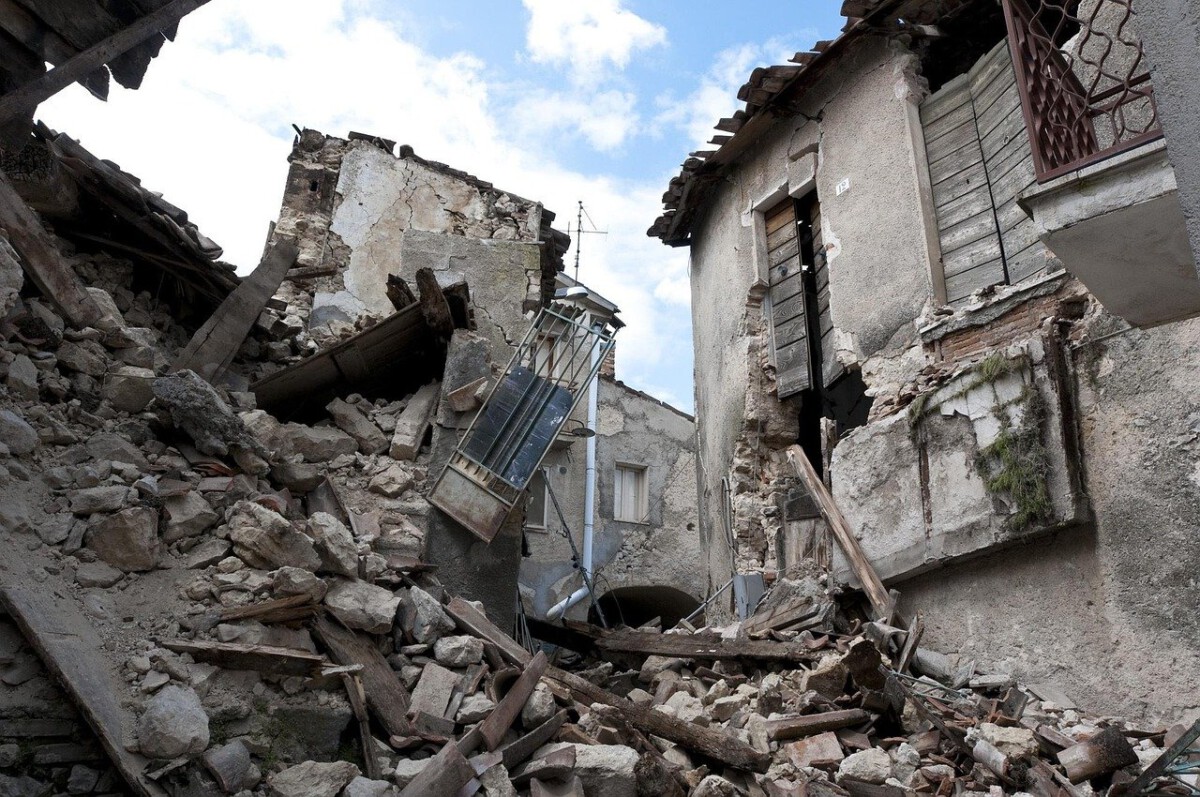Japan: The Epicenter of Seismic Technology and Tragedy

Japan’s reputation as one of the world’s most earthquake-prone countries is underscored by its constant vigilance and innovation. Sitting atop four major tectonic plates, the country experienced over 1,500 earthquakes in 2023, according to the Japan Meteorological Agency. In March of that year, a magnitude 7.2 earthquake struck off the Fukushima coast, reigniting memories of the deadly 2011 Tōhoku disaster. Despite the frequency and magnitude of these tremors, Japan’s investment in early warning systems and strict building codes have dramatically reduced fatalities. The government estimates a 70% chance of a major quake striking the Tokyo region within the next three decades. Many cities conduct regular evacuation drills, and earthquake-resistant architecture has become the norm. Japan’s relentless commitment to preparedness is a direct response to its harrowing seismic history and the looming threat of future catastrophes.
Indonesia: Battling Nature’s Fury in the Ring of Fire

Indonesia’s seismic vulnerability is legendary, with the archipelago straddling some of the world’s most volatile fault lines. The National Disaster Mitigation Agency reported more than 1,000 earthquakes in 2023, many of which went unreported due to their lower magnitude. January 2023 saw a magnitude 6.0 quake in West Sumatra, displacing thousands and causing extensive property damage. The enduring trauma of the 2004 Indian Ocean earthquake and tsunami, which claimed over 230,000 lives, remains fresh in the nation’s psyche. Indonesia’s government continues to prioritize disaster mitigation, focusing on community education and strengthening infrastructure. Emergency response teams are regularly drilled, and new regulations mandate earthquake-resistant construction for public buildings. In 2024, ongoing efforts aim to bridge the gap between urban and rural preparedness, as many remote areas remain particularly vulnerable.
Turkey: Where the Earth Moves Without Warning

Turkey’s location at the intersection of the Eurasian and Arabian plates subjects it to relentless seismic activity. In February 2023, a catastrophic 7.8 magnitude earthquake ravaged the southern provinces, with the official death toll surpassing 50,000. The quake left vast swathes of cities flattened, prompting a wave of national mourning and urgent international aid. The Kandilli Observatory reports that Turkey experiences an average of 20,000 earthquakes per year, though most go unnoticed. Istanbul, a city of over 15 million, sits dangerously close to the North Anatolian Fault, raising fears of a devastating urban quake. After the 1999 İzmit disaster, which killed 17,000, authorities ramped up efforts to retrofit older buildings and enforce stricter construction standards. The 2023 tragedy has intensified scrutiny of compliance and spurred new legislation to accelerate the rebuilding of safe, resilient homes.
Mexico: Preparing for the Unpredictable

Mexico’s seismic landscape is shaped by the interaction of the North American, Cocos, and Pacific plates, making it one of the most active regions in the Americas. In 2023, a magnitude 6.9 earthquake off the Pacific coast rattled cities and caused minor infrastructure damage, while thousands of smaller quakes were recorded by the National Seismological Service. The 2017 Puebla earthquake, which killed over 360 people, remains a stark reminder of the stakes involved. Mexico City’s iconic seismic alert system now covers over 25 million residents, providing critical seconds to seek safety. Building codes have been revised repeatedly, and regular drills are conducted in schools and workplaces. According to recent reports, the government has increased funding for public education campaigns, aiming to foster a culture of readiness across all communities. The resilience of the Mexican people is reflected in their ongoing efforts to adapt and prepare, even as nature remains unpredictable.
Chile: Leading the World in Earthquake Readiness

Chile is often referred to as the “Earthquake Capital of the World,” and for good reason. The country experiences roughly 15,000 quakes annually, as reported by the National Seismological Center, though most are too minor to be felt. The 2010 Maule earthquake, registering a staggering magnitude of 8.8, spurred sweeping changes in disaster policy and urban planning. In 2023, a 6.4 magnitude quake shook central Chile, but thanks to robust building codes, casualties and damage were minimal. Chile’s schools regularly conduct earthquake drills, and the government operates an advanced alert system integrated with mobile technology. Scientists and engineers from around the globe study Chile’s approach to resilience, which includes strict enforcement of construction standards and public awareness campaigns. The nation’s proactive stance has paid off, with recent earthquakes causing fewer injuries and less destruction compared to past events.
Qatar: Stability Amidst Regional Upheaval

Qatar stands out as one of the safest places in the world when it comes to seismic activity. Located far from any significant tectonic plate boundaries, the country has not recorded a major earthquake in more than a century, according to the Qatar Meteorological Department. This geological stability has allowed Qatar to focus on rapid infrastructure growth without the need for extensive seismic precautions. Recent construction projects, including preparations for the 2022 FIFA World Cup, benefited from advanced engineering but rarely had to account for earthquake risk. Government policy still requires modern safety standards for new buildings, but these are aimed more at resilience to extreme temperatures and sandstorms than seismic events. Residents and businesses enjoy peace of mind, knowing that the earth beneath them is unlikely to shift unexpectedly. Qatar’s unique position in the Gulf makes it a case study in urban development without the shadow of earthquakes.
Saudi Arabia: An Oasis of Calm in a Seismically Active Region

Saudi Arabia, despite its proximity to the Red Sea Rift and other regional fault lines, experiences remarkably low seismic activity. The Saudi Geological Survey recorded only minor tremors in 2023, none of which resulted in damage or casualties. The Arabian Shield, a geologically stable area covering much of the country, shields major cities like Riyadh and Jeddah from significant risk. Urban development continues at a breakneck pace, with new megaprojects such as NEOM and the Red Sea Project prioritizing other environmental concerns over earthquakes. Emergency preparedness remains a government priority, but the focus is more on floods and sandstorms. Residents rarely experience noticeable tremors, allowing for uninterrupted economic and social activity. Saudi Arabia’s low seismic risk is a significant advantage as it seeks to diversify its economy and expand its infrastructure in the coming years.
Egypt: Ancient Monuments, Modern Safety

Egypt’s seismic profile is defined by its stable position along the northeastern corner of Africa. The Egyptian Geological Survey reports only a handful of minor earthquakes each year, most of which are not felt by the population. The Nile River Valley, home to the vast majority of Egyptians, has enjoyed centuries of geological tranquility. In 2023, recorded tremors were minimal and had no impact on daily life or infrastructure. Egypt’s iconic monuments, from the Pyramids of Giza to the temples of Luxor, have stood for millennia in part due to this stability. Tourism and cultural preservation efforts benefit from the lack of seismic threat, as restoration work can proceed without fear of sudden disasters. The government continues to monitor seismic activity, but the risk is considered negligible compared to other regional hazards.
Comparing Global Earthquake Preparedness

Each of the top earthquake-prone countries has developed distinct strategies to mitigate risk, reflecting their unique histories and geographies. Japan leads in early warning technology and public drills, while Chile’s strict building codes set a global benchmark. Indonesia’s focus on community education is crucial for its sprawling, vulnerable islands. Mexico’s seismic alert system provides vital seconds of warning, and Turkey’s renewed emphasis on enforcement aims to prevent another devastating tragedy. Meanwhile, nations with little seismic risk, such as Qatar, Saudi Arabia, and Egypt, can prioritize resources elsewhere, yet many still maintain high construction standards as a precaution. The global trend is clear: resilience is built not just on geography, but on preparation, adaptation, and learning from each seismic event. The contrast between high-risk and low-risk countries highlights the importance of tailored approaches to disaster readiness in a rapidly changing world.
Recent Earthquake Trends and the Changing Face of Risk

The last two years have brought a surge in major seismic events, from Turkey’s devastating 2023 quake to the persistent tremors rattling Japan and Indonesia. Climate change, urbanization, and population growth are intensifying the impacts of earthquakes, even in countries with robust preparedness measures. New research in 2024 suggests that while the frequency of large earthquakes remains relatively constant, their consequences are becoming more severe as cities expand into hazard zones. Meanwhile, nations with minimal risk continue to reap the benefits of stability, investing in development with fewer constraints. Advances in monitoring technology and international cooperation are helping to reduce casualties, but persistent gaps remain—especially in rural and underserved areas. As the world confronts new challenges, understanding where earthquakes strike hardest—and where they barely register—remains crucial for policymakers, engineers, and communities alike.







